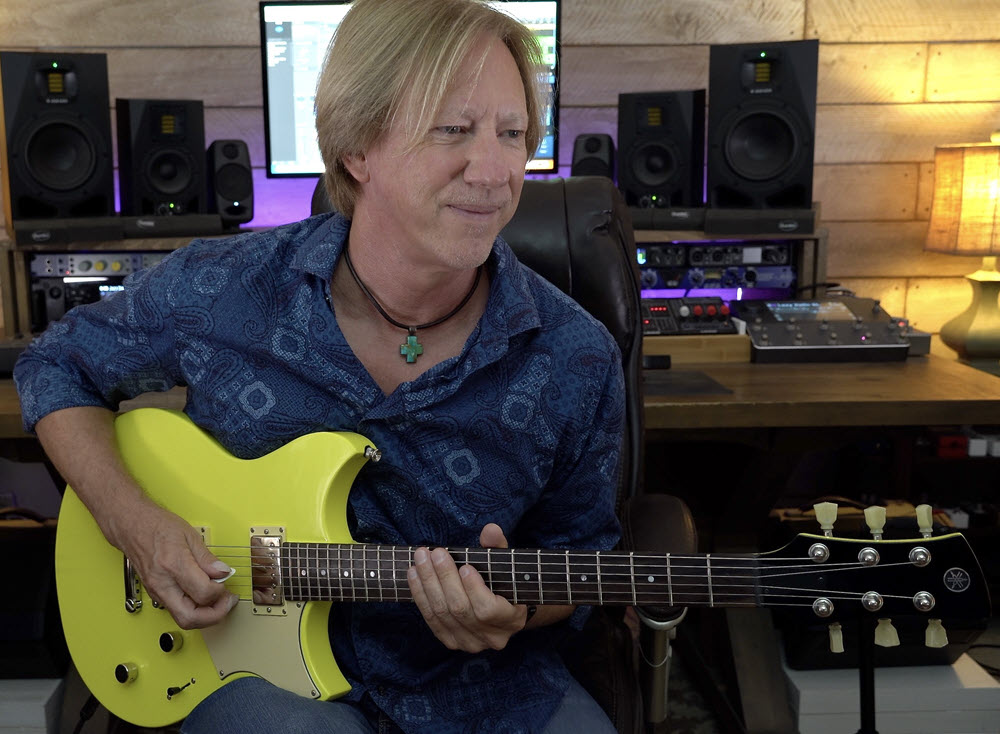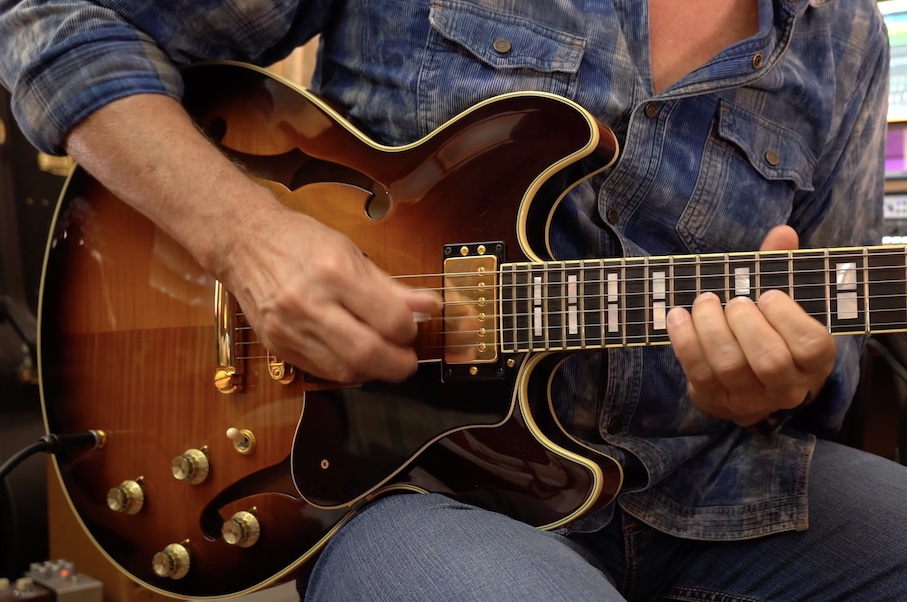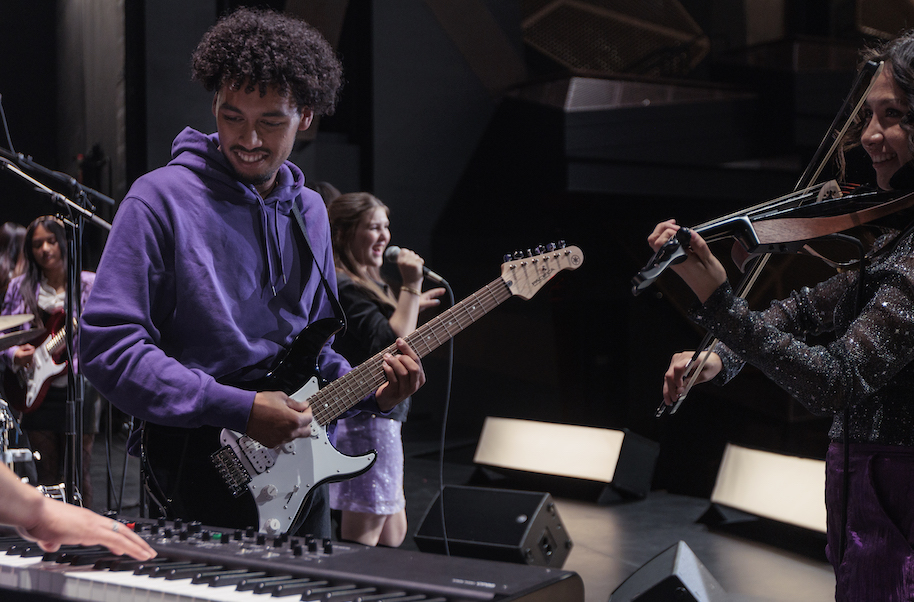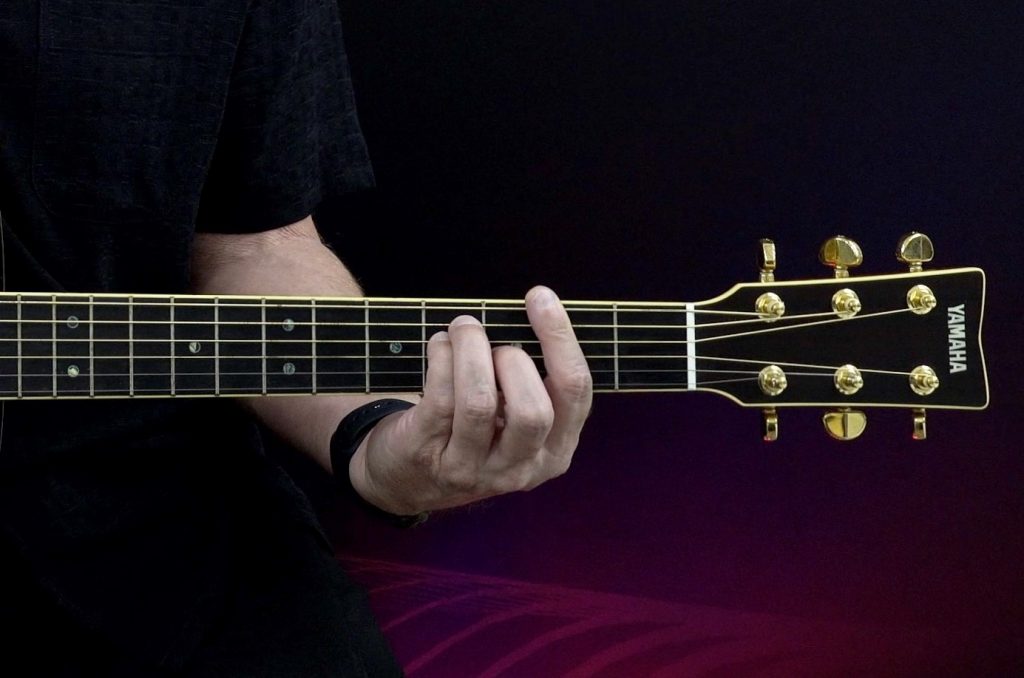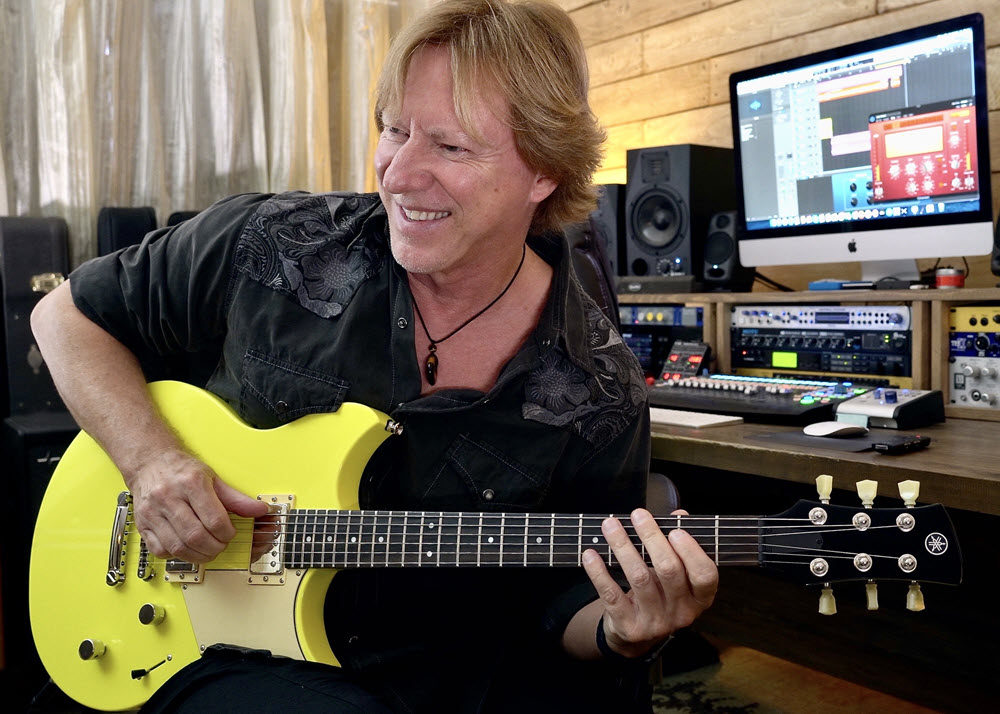Tips for Playing Rhythm Guitar
Improve your groove.
Most budding guitarists spend more time developing their melodic chops than perfecting their rhythm skills. Yet any professional will tell you that 95% of covering the gig depends on playing solid, stylistic rhythms while supporting the vocalist or lead instrumentalist. Even if you are the lead guitarist in a band, you’ll still spend the majority of your time playing chords and rhythmic embellishments.
And though this may sound like a contradiction in terms, great rhythm guitarists actually make excellent soloists due to their strong sense of timing, phrasing and rhythmic feel. Here are some tips for developing that kind of solid foundation.
1. Use a Metronome
Whether it’s a traditional pendulum metronome like a Yamaha MP-90 or a precision electronic device such as the Yamaha ME-55BK clip-on model, a metronome should be a staple of your practice routine. It will help you build an internal sense of tempo and timing, and will give you a good feel for the music you’re playing.
2. Tap Your Foot
Tapping your foot in time with the metronome provides a visual cue that you can use to coordinate with your strumming hand. I recommend tapping on the downbeats only. This equates to the tempo of the music and is equal to quarter notes in rhythmic notation (i.e., 4 beats in a measure when playing in 4/4 time). Strum downwards (these are called downstrokes) on the downbeats (i.e., when your foot is on the floor) and upwards (upstrokes) on the upbeats (when your foot is off the floor).
3. Verbalize the Rhythms
Verbalizing rhythms (that is, saying them out loud) helps to give you a strong understanding of the rhythmic feel before you even play a single note. Here’s a list of common verbalizations:
| Quarter | II: | 1 | 2 | 3 | 4 | :II |
| Eighth | II: | 1 & | 2 & | 3 & | 4 & | :II |
| Triplet | II: | 1 2 3 | 2 2 3 | 3 2 3 | 4 2 3 | :II |
| Shuffle | II: | Da-Dit | Da-Dit | Da-Dit | Da-Dit | :II |
| Sixteenth | II: | 1E&A | 2E&A | 3E&A | 4E&A | :II |
There are a couple of other verbalizations used to call out triplet rhythms. Words with three syllables, like blueberry and “tri-puh-let,” work extremely well. Triplet shuffle rhythms can be verbalized with a long and short sound such as Da – Dit. All these verbalizations are demonstrated in the video below.
4. Listen to the Hi-Hat
In most pop music, the kick drum accentuates the downbeat of one and three, with other syncopations added for “pushes” and shuffle rhythms; the snare drum acts as a counterpart, typically accenting beats two and four.
But the hi-hat plays the subdivisions, and therefore carries the rhythmic feel of the music. That’s why you should always listen carefully to it when playing rhythm guitar! For example, in a straight-eighth feel, the hi-hat will generally be playing eighth notes. In a shuffle or triplet feel, the hi-hat will be playing triplets, and in a sixteenth-note feel, the hi-hat will be playing sixteenth notes.
5. Practice Playing in the “Pocket”
Of course, not all rhythm parts need to match the subdivisions, but if you want to orchestrate intricate layers and guitar overdubs, you’ll need to be adept at crafting parts that sit in the “pocket” of both the strong pulses provided by the kick and snare, as well as the subdivisions carried by the hi-hat.
I define “playing in the pocket” as the rhythmic placement of a specific guitar part. There may be many parts and “pockets” for you to lock into in any given musical situation. Having a solid understanding of time, feel and subdivisions will allow you to craft the perfect parts and aid you in finding the “pocket” for each of them.
Rhythm Practice
Here are the eight simple rhythm patterns that I demonstrate in the video below. (Click here to download the manuscript as a PDF.) Above the beats and subdivisions are strumming directions: Downstrokes are indicated by a downward bracket (“⊓”) and upstrokes with an upward “v” shape. The verbalizations are also shown. Verbalizing a rhythm before playing it can help you internalize and understand the sound of each rhythmic pattern.

To add complexity to these examples, try playing the shuffle rhythm backwards or combine triplets with the sixteenth note examples.
The Video
Here’s a video of me playing these eight exercises, plus, at the end, I play all eight of them back-to-back. Watching this will help you see and hear the strumming directions as well as learning how to verbalize each rhythm and develop hand and foot coordination with the upbeats and downbeats.
This may look easy, but I assure you it isn’t — in fact, it may well be a challenge for even the most seasoned players!
The Guitar

The Yamaha Pacifica PAC612VIIFM I’m playing in this video has become one of my “go-to” guitars for recording sessions and film projects. The Wilkinson tremolo can be used to add perfectly tuned “shimmers” to chordal parts, and the Seymour Duncan pickups add a professional sheen to every note.
These coil-tappable humbucker and single-coil pickups pair extremely well with the lightweight alder body and flame maple veneer to produce some of the best rhythm (and lead) tones you’ll ever hear.
The Wrap-Up
When you devote time (no pun intended) to rhythm guitar studies, you’ll find that your phrasing chops improve, your sense of time graduates to “groove and pocket,” and your value as a guitarist soars above and beyond the competition.
Photographs courtesy of the author.
Check out Robbie’s other postings.
Click here for more information about the Yamaha PAC612VIIFM electric guitar.











